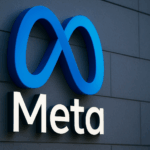Apple (NASDAQ:AAPL) is grappling with significant challenges in its artificial intelligence (AI) initiatives, raising concerns among investors. These challenges are emphasized by recent events, such as key personnel moving to competitors and the postponement of the long-awaited AI-powered Siri update until 2026. Apple’s struggle to keep pace in AI advancements contrasts sharply with competitors who are rapidly launching new tools. Lacking a strong AI strategy, Apple faces potential threats not only from tech giants like Google (NASDAQ:GOOGL) and Meta but also from geopolitical and market factors.
Apple’s history is one of technological triumphs, yet its current AI performance starkly contrasts with past accomplishments. Traditionally, Apple has excelled in turning technology into seamless user experiences, creating cohesive ecosystems across hardware and software. Today, critics note that the company is lagging behind in an AI-driven market, with emerging development efforts failing to meet expectations. Competitors are capitalizing on this lag, further advancing their own AI frameworks.
How is Apple’s AI Strategy Faring?
Apple’s AI endeavors, including its recent partnership with OpenAI, mirror its effort to integrate AI into the heart of its offerings, aiming to retain user loyalty through innovation in Siri and other services. However, delays and internal challenges highlight hurdles in matching the AI capabilities of competitors like OpenAI and Google, who continue to expand their technological scope at a rapid pace.
Can Apple Address Its Global Market Challenges?
In addition to AI, Apple faces challenges in the global market, particularly in China, which could impact its growth momentum. Apple’s share of the smartphone market in China is threatened by both local competitors and geopolitical tensions. The possibility of stricter regulations from authorities poses further risks. Simultaneously, uncertainties surrounding tariff policies and supply chains loom over Apple’s strategic positioning.
Apple’s App Store revenue is also under scrutiny, particularly following legal decisions that empower developers to bypass Apple’s payment systems, affecting the company’s bottom line. The potential loss of revenue from Google’s default search agreements due to antitrust actions adds another layer of complexity. Apple’s resourceful utilization of the current ecosystem is being tested as new revenue streams are explored.
The AI market is characterized by rapid technology transfers, where companies like Meta aggressively recruit talent from competitors, disrupting established hierarchies. Apple’s ongoing efforts to remain competitive by considering strategic acquisitions, as in the rumored potential buyout of Perplexity, reflect its urgency to bolster AI competencies.
Apple’s iconic brand might be at a crossroads as it grapples with sustaining its appeal amidst growing technological challenges. Examining potential strategic maneuvers such as partnering with prominent players like Meta or acquiring prominent AI firms to foster a stronger ecosystem is crucial for Apple’s continued relevance.
Concerning market adaptability, Apple’s move to impose an AI tariff on applications could reshape revenue dynamics, albeit at the risk of stifling developer goodwill. Partnerships to enhance device integration with AI-centric services are also under exploration, showcasing Apple’s proactive search for creative alliances that enhance its market stance and ecosystem profitability.
Identifying inventive ways to leverage Apple’s current market position while integrating AI-driven experiences across its product lines may prove essential to maintaining competitive advantages. As the AI landscape continues to evolve, Apple’s navigation across these turbulent challenges will define its trajectory in the global technology narrative.










